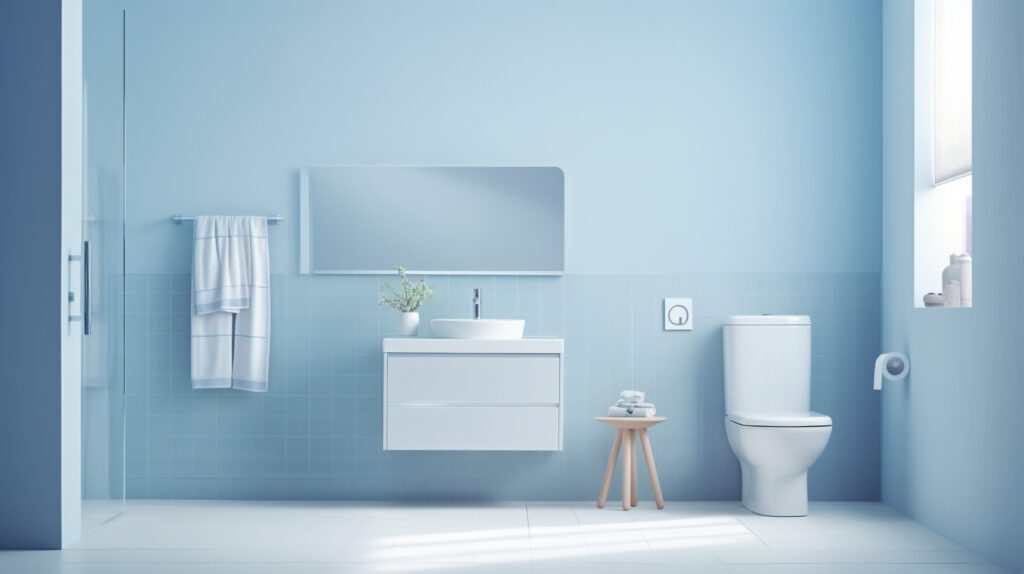As the global focus on environmental sustainability intensifies, washrooms—a vital yet often overlooked aspect of infrastructure—have become key areas for implementing eco-friendly practices. Sustainable washroom solutions not only help conserve natural resources but also enhance operational efficiency and support corporate social responsibility goals. By adopting environmentally conscious designs, technologies, and practices, organizations can contribute to a greener future while maintaining high standards of hygiene and user comfort.
1. Optimizing Water Usage
Water conservation is a cornerstone of sustainable washroom practices. Innovative technologies and systems are now available to minimize water wastage.
- Low-Flow Fixtures: Toilets, urinals, and faucets with water-saving mechanisms significantly reduce consumption without compromising functionality.
- Sensor-Activated Systems: Touchless faucets and flush systems dispense water only when needed, preventing overuse.
- Greywater Recycling: Washrooms equipped with systems to reuse water from sinks for toilet flushing help reduce water dependency.
2. Reducing Energy Consumption
Energy-efficient solutions in washrooms lower utility costs and reduce carbon footprints.
- LED Lighting: Replacing traditional bulbs with LED lights ensures minimal energy usage while providing excellent illumination.
- Motion Sensors: Lights and hand dryers equipped with motion sensors activate only when necessary, preventing energy waste.
- Efficient Hand Dryers: Advanced hand dryers use less energy by drying hands faster compared to older models.
3. Utilizing Eco-Friendly Materials
The materials used in washroom construction and operation play a crucial role in sustainability.
- Recycled and Recyclable Materials: Surfaces, partitions, and flooring made from recycled materials reduce the demand for virgin resources.
- Biodegradable Consumables: Toilet paper, paper towels, and soaps made from biodegradable materials minimize environmental impact.
- Low-VOC Paints and Adhesives: Using products with low volatile organic compounds (VOCs) improves air quality and reduces harmful emissions.
4. Implementing Waste Management Systems
Effective waste management ensures that washrooms operate sustainably without generating excessive waste.
- Composting Toilets: These toilets turn human waste into compost, eliminating the need for water and reducing waste output.
- Recycling Bins: Providing separate bins for paper, plastic, and general waste encourages recycling among users.
- Minimizing Single-Use Items: Promoting the use of reusable hand towels or durable soap dispensers reduces dependency on disposable items.
5. Adopting Green Cleaning Practices
Sustainable cleaning solutions ensure that washroom hygiene is maintained without harming the environment.
- Non-Toxic Cleaning Agents: Eco-friendly cleaning products are from harsh chemicals, making them safer for users and ecosystems.
- Water-Efficient Cleaning Equipment: Advanced tools like steam cleaners reduce water usage during sanitation processes.
- Scheduled Cleaning Protocols: Smart systems that monitor foot traffic can optimize cleaning schedules, ensuring efficient use of resources.
6. Integrating Smart Washroom Technologies
Smart technologies support sustainable practices by enhancing efficiency and reducing resource consumption.
- Usage Monitoring: Sensors track water, soap, and paper usage, enabling timely replenishment and reducing waste.
- Data Analytics: Insights from usage data help optimize operations and identify opportunities for further sustainability improvements.
- Automated Maintenance Alerts: Predictive systems detect leaks or malfunctions, allowing prompt repairs that prevent unnecessary resource loss.
7. Encouraging User Participation
Sustainability efforts are most effective when users actively contribute to greener practices.
- Educational Signage: Displaying tips and information encourages users to conserve water and dispose of waste responsibly.
- Incentive Programs: Businesses can reward sustainable behaviors, such as using hand dryers instead of paper towels.
- Feedback Systems: Digital kiosks or QR codes allow users to report inefficiencies, fostering a collaborative approach to sustainability.
8. Designing for Longevity and Adaptability
Sustainability in washrooms also involves planning for durability and adaptability to future needs.
- Durable Fixtures: Investing in high-quality, long-lasting materials reduces the need for frequent replacements.
- Modular Designs: Easily upgradable components accommodate new technologies without significant reconstruction.
- Future-Proofing: Incorporating designs that can adapt to changing sustainability standards ensures long-term viability.
Conclusion
Sustainable washroom practices are essential for reducing environmental impact while maintaining hygiene and user satisfaction. From water conservation and energy efficiency to waste reduction and smart technologies, these practices pave the way for greener facilities. By embracing these strategies, organizations and individuals can contribute to a sustainable future, ensuring that washrooms not only meet today’s needs but also safeguard resources for generations to come.












